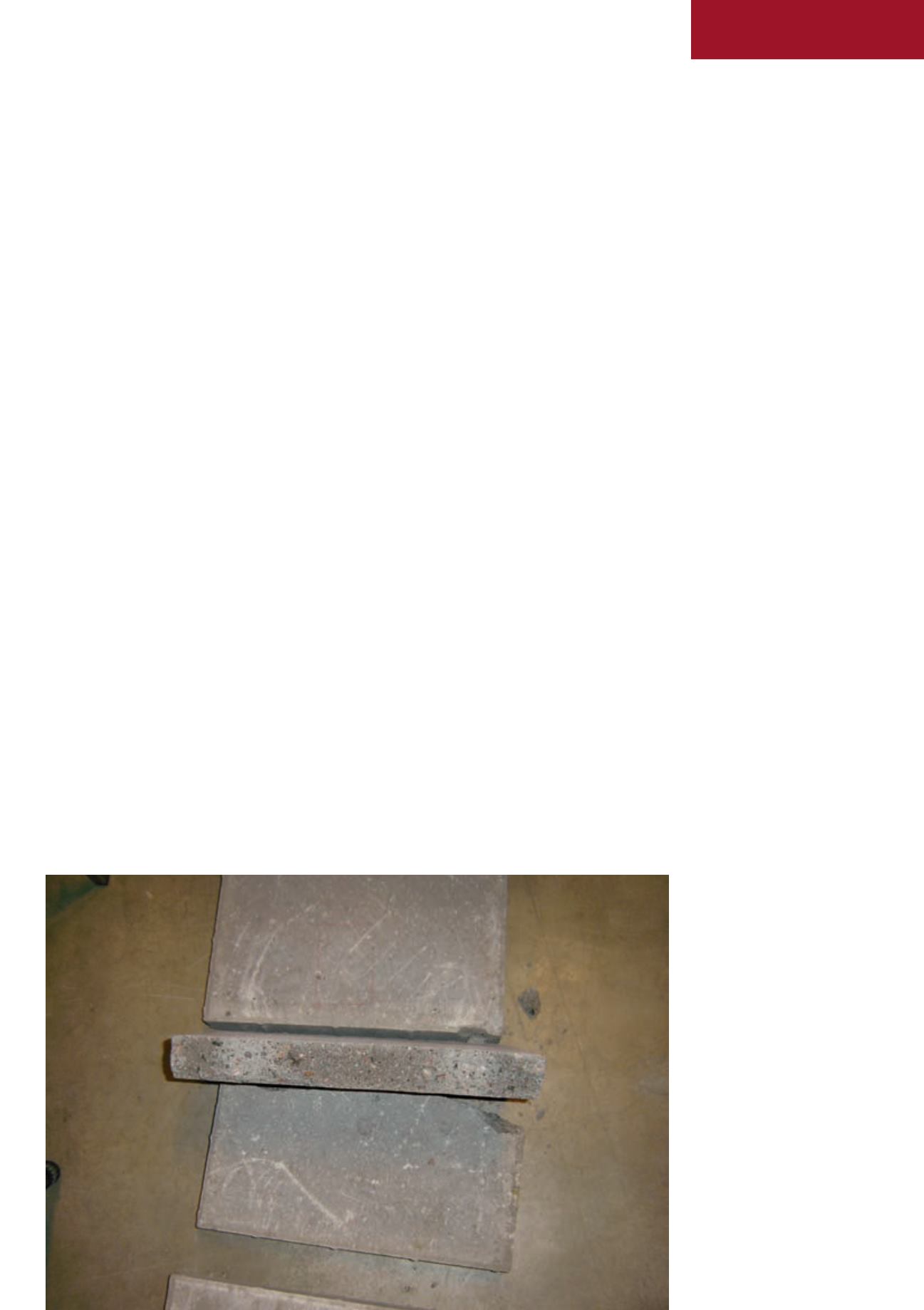
9
d
&
ri
NOVEMBER-DECEMBER 2013
We are all familiar with the microwave. There it is, in the kitchen, and it is very handy when you
want to heat up a meal. But could microwave technology find an application in the demolition
industry?
Dr Saku Suuriniemi
from Tampere Technical University in Finland reports
M
icrowaves are
everywhere
around us. They
are simply a frequency band
of electromagnetic radiation,
comparable to any other radio
frequency. In addition to heating
food, microwaves are used to
transfer information. Also, many
radars operate on this frequency.
The same frequency, 2,45 Mhz,
that is used in an microwave oven
is used for wifi applications. The
reason for this is simple: this
frequency is meant for household
use and thus is less regulated than
many others.
Microwaves are generated
with a relatively simple device
called a magnetron. It is well-
known basic technology, as
evidenced by how little a 1 kW
microwave oven costs today.
How can the waves be used in
heating? The purpose is to create
a reaction with water, or to be
NEWS REPORT
Microwaves –
their application
in demolition
power (kW) we have per area
(square meter). The damage that
can be inflicted on human organs
comes from heat generation
(because the organs are mostly
water). In small quantities, the
human body can handle the
heat simply by carrying it away
with blood. Human eyes are
different because they are one of
the most sensitive parts of the
body and the risk of permanent
damage is truly present. There is
therefore sufficient reason to be
very careful. Health and safety
standards concerning effects of
microwaves on the human body
have been published around the
world.
RADIATION MODES
When talking about radiation,
we have to make a clear
difference between ionising
and non-ionising radiation.
Electromagnetic radiation
A massive piece
of concrete with a
beautiful crack through
it, therefore it has lost
its strength and the
goal has been achieved
more exact, water molecules. Low
power levels, like those used with
wifi, do not really create heat.
In addition, the waves are not
focused and the radiation spreads
out in every direction.
Considerable power is
naturally required for heating
applications. Of equal importance
is that the radiation is directed
to a limited area only. In practice
this is done with a control device,
a kind of steel tube.
It is clear that cats should
not be microwaved. Does this
mean the waves are harmful to
us? There is natural radiation
around us all the time, again at
very low power levels, and it is
impossible for human beings
to notice this, just as any radio
frequency is impossible to feel.
The situation is very different
with microwaves at high power
levels. Most important is the
density of power - how much
does not ionise, meaning it has
no effect on the structure of a
molecule. In practice this means
that no permanent change in
material is caused. However,
radioactive radiation is ionising
in nature and must be treated
totally differently.
What would microwave
radiation do to a block of
concrete? If we could create
fractures in the block without
touching it, the whole demolition
industry would be changed.
Even if the concrete was not
broken up but just weakened,
for example through the
creation of microscopic cracks,
the productivity of traditional
demolition tools would be
multiplied. The fact that the
behaviour of microwaves is very
well known and the components
are relatively cheap makes this
concept a truly interesting one.
The Tampere University
of Technology in Finland has
carried out research on this topic.
The basic theory involved the
creation of a high temperature
spot that would generate heat
expansion in a concrete block
that in turn would create circular
tension around the heated area.
And we know that concrete can
not stand tension too well.
Initial calculations were
carried out that supported the
theory. There were enough
reasons to start laboratory
testing. In the test, concrete
blocks removed from a building
were microwaved. The device
had two magnetrons, each of 6
kW power and the radiation was
focused as accurately as possible.
In the tests it was identified
how important moisture is
if successful results are to be
achieved. The moisture must be
>
10


